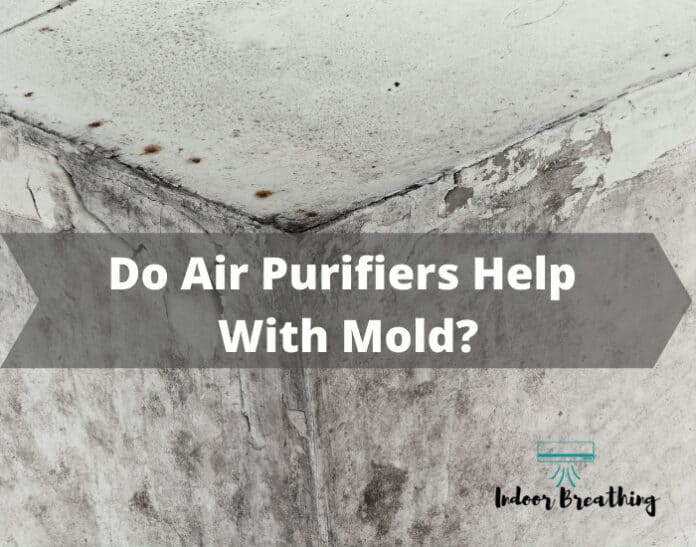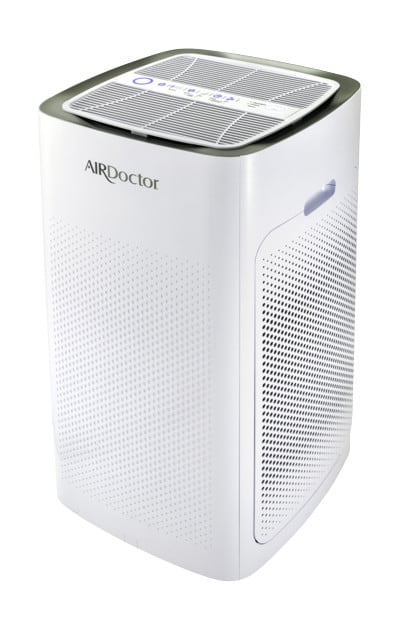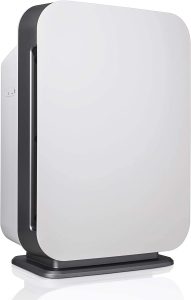As the famous saying goes, “love is in the air,” but particles travel through the air around us, and as we breathe, there is an excellent probability of inhaling them.
In addition, molds can be microorganisms that we accidentally breathe in, and it is good that air purifiers are there to make the air clean for us.
Whether an air purifier can remove molds depends on the type of air purifier used, and there is an excellent chance of eliminating it through the said device.
Table of Contents
What Is Mold and How Does It Grow?
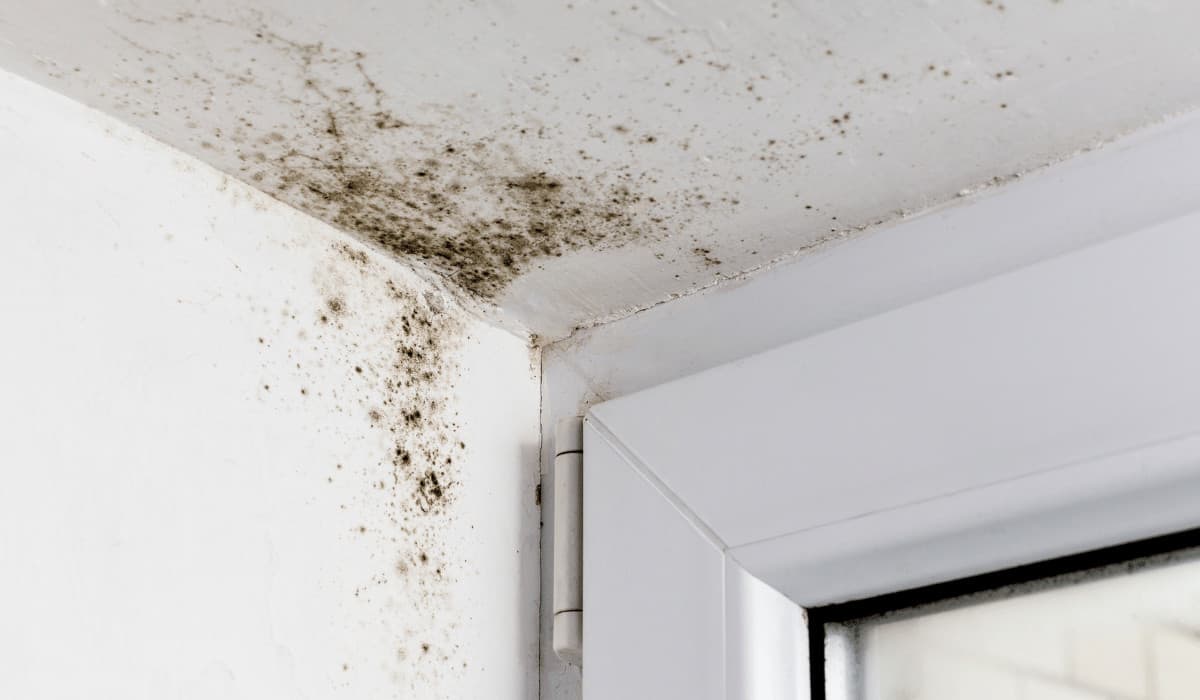
Molds can be seen everywhere since they thrive in an environment where there is a presence of oxygen and moisture.
Belonging to a fungi family, it can grow anywhere indoors or outdoors. If an area is dark, moist, and lacks ventilation, a mold would probably spurt, and they will continue growing as long as the area is humid and has enough nutrition. They can also live on painted walls, especially after it gets wet.
Inside our own homes, it also grows in woods, papers, carpets, food, and insulation. However, its primary source of growth is water, so moisture is the most significant factor.
Other things that contribute to a mold’s development are food source, oxygen, and temperature, particularly between 40 and 100 degrees Fahrenheit. It feeds through its hyphae filaments, which act as their digestive enzymes, as it spreads through the affected surface.
These molds are found indoors, outdoors, and even in the air, we breathe. Through its stalks, molds produce microscopic spores that travel through the air.
Though they are helpful for the environment since they act as decomposers, unfortunately, some molds contain toxic substances that may pose risks to our health.
Is Mold Dangerous? What Are Mold Health Risks?
Not all molds are dangerous, but some may harm our bodies, specifically those with suppressed immune systems. It becomes a bridge for opportunistic infections to enter the body as allergens, irritants, and mycotoxins, commonly known as toxic substances or chemicals, may be produced by molds.
Thus, inhaling or having contact with its spores may lead to aggravated asthma attacks and allergic reactions, whether the mold is dead or alive.
Since this fungus can be found everywhere, it is common to have an immediate or delayed allergic reaction. Symptoms that might occur to the body once contact has been made with molds are similar to flu, including runny nose, headache, sneezing, red eyes, and skin rash.
Exposure to molds can irritate the eyes, skin, nose, and throat, whether allergic or not. Breathing mold spores can also lead to lung problems, such as a rare disease called Hypersensitivity Pneumonitis.
Mold is a type of fungus that thrives in damp, humid environments. It spreads by releasing spores into the air, which can cause allergic reactions, respiratory issues, and other health problems when inhaled. Common signs of mold exposure include coughing, sneezing, eye irritation, and in severe cases, asthma attacks and other respiratory conditions.
In addition, there is an inflammation of the airways in the lungs brought by inhaled environmental allergens. However, as reactions to molds closely resemble other diseases, it is best to consult a health professional first.
How To Test For And Identify Mold
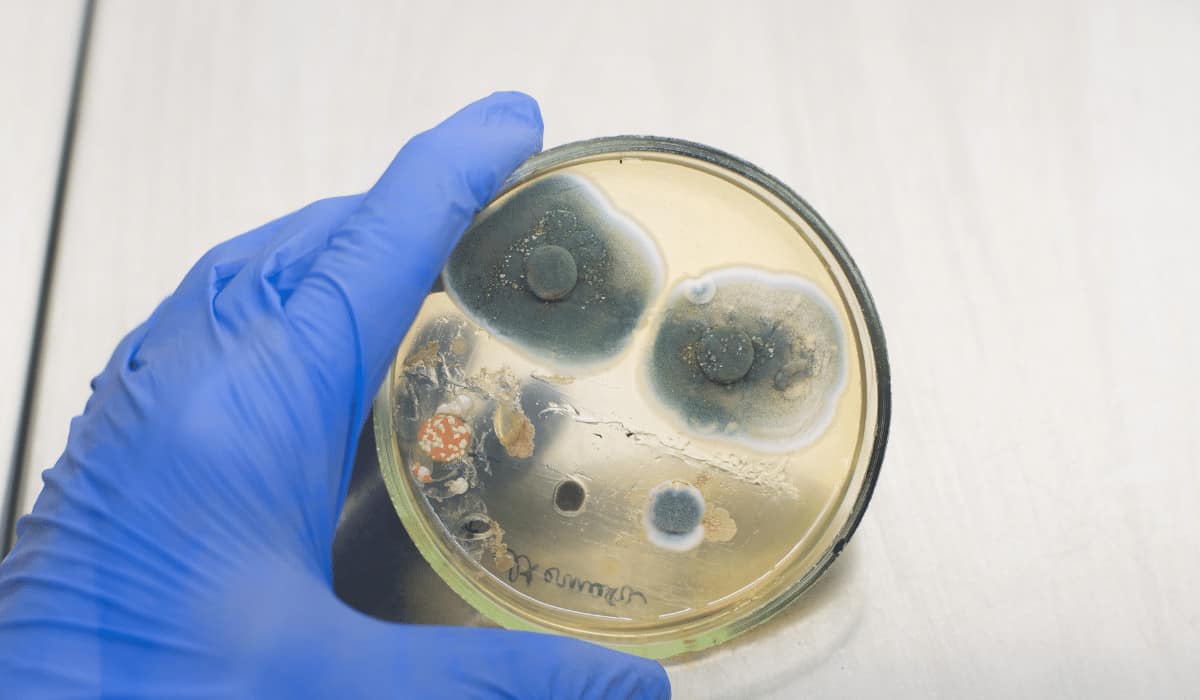
Since molds are common in houses and we are unsure if they are toxic, it is always better to test them. Not all molds can be seen with the naked eye, and if it is harmful, they should not be cleaned without protection.
Before removing them, it will be best to test them first to see what kind of mold we will deal with. A professional can be trusted to handle mold testing and may use different tests depending on the organism.
Bulk, Tape, or Swab Tests
These can be used if the molds are visible. However, these tests can be inconvenient since bulk testing requires cutting a piece of the infected area, while tape and swab tests can potentially ruin the sample under the microscope.
Air Tests
Standard and wall cavity air tests can determine potential air contamination. In addition, a portable air pump collects air as samples to be analyzed in laboratories.
Petri Dish Tests
Petri Dish tests are done using an agar solution, which involves letting it stay in the area where molds might grow. The bad side is that it is time-consuming and takes almost two weeks to be tested.
How Air Purifiers Work
Air purifiers are devices designed to remove contaminants from the air. They typically consist of a filter or a series of filters that capture particles as air passes through them. There are various types of air purifiers, but the most relevant for mold are those equipped with High-Efficiency Particulate Air (HEPA) filters and activated carbon filters.
- HEPA Filters: These filters are highly effective at trapping airborne particles, including mold spores. They can capture particles as small as 0.3 microns with 99.97% efficiency, making them a powerful tool against mold spores.
- Activated Carbon Filters: These filters can absorb odors and gases, including the musty smell often associated with mold.
Benefits of Using Air Purifiers for Mold
- Reduces Airborne Mold Spores: Air purifiers with HEPA filters can significantly reduce the concentration of mold spores in the air, lowering the risk of inhalation and subsequent health problems.
- Improves Indoor Air Quality: By removing mold spores and other allergens, air purifiers can improve overall indoor air quality, making the environment healthier and more comfortable.
- Minimizes Mold Spread: Reducing the number of mold spores in the air can help prevent the spread of mold to other areas of the home, especially when used in conjunction with other mold control measures.
Limitations of Air Purifiers in Mold Control
- Does Not Eliminate Existing Mold: While air purifiers can capture mold spores, they do not address the root cause of mold growth. Mold can continue to thrive on surfaces if moisture and humidity levels are not controlled.
- Requires Proper Maintenance: Air purifiers need regular filter changes to maintain their effectiveness. A clogged or dirty filter can reduce the purifier’s ability to capture mold spores.
- Limited Coverage Area: The effectiveness of an air purifier is limited to the area it covers. Large homes or buildings may require multiple units to achieve comprehensive air purification.
Integrating Air Purifiers with Other Mold Control Measures
To effectively combat mold, air purifiers should be used as part of a broader mold control strategy. Here are some additional measures to consider:
- Control Humidity Levels: Use dehumidifiers to maintain indoor humidity levels below 60%. Mold thrives in damp environments, so keeping the air dry is crucial.
- Address Water Leaks: Fix any leaks or water damage promptly to prevent mold from establishing a foothold.
- Improve Ventilation: Ensure proper ventilation in areas prone to moisture, such as bathrooms, kitchens, and basements.
- Regular Cleaning: Clean and disinfect surfaces regularly to remove mold spores and prevent growth.
Different Types of Household Mold
Even if we have no control over the molds that grow outdoors, we should keep them from having their habitat in our homes to avoid health complications later on. Though it is difficult to distinguish them, different types of mold can be commonly seen indoors.
Acremonium
One of them is acremonium, which can be found in moist areas such as drainpipes and produces potent toxins that might lead to bone marrow diseases.
Alternaria
Alternaria is green or brown with a velvet texture and is mainly found in bathtubs and shower areas, with symptoms similar to allergic reactions such as watery eyes and sneezing. However, this type of mold spreads quickly and should be removed immediately.
Cladosporium
Cladosporium is found in fabrics around the house like carpet and is linked to respiratory infections and allergic reactions.
Penicillium
Another mold type that can trigger lung problems is penicillium, which is airborne and seen in mattresses and wallpapers but is also used for health purposes to create antibiotics.
Stachybotrys
Lastly, the Stachybotrys, also known as black mold, is the most feared due to its reputation for causing severe health problems. In damp areas with increased humidity, black molds are linked to cases of bleeding in the United States.
What Is Mildew?
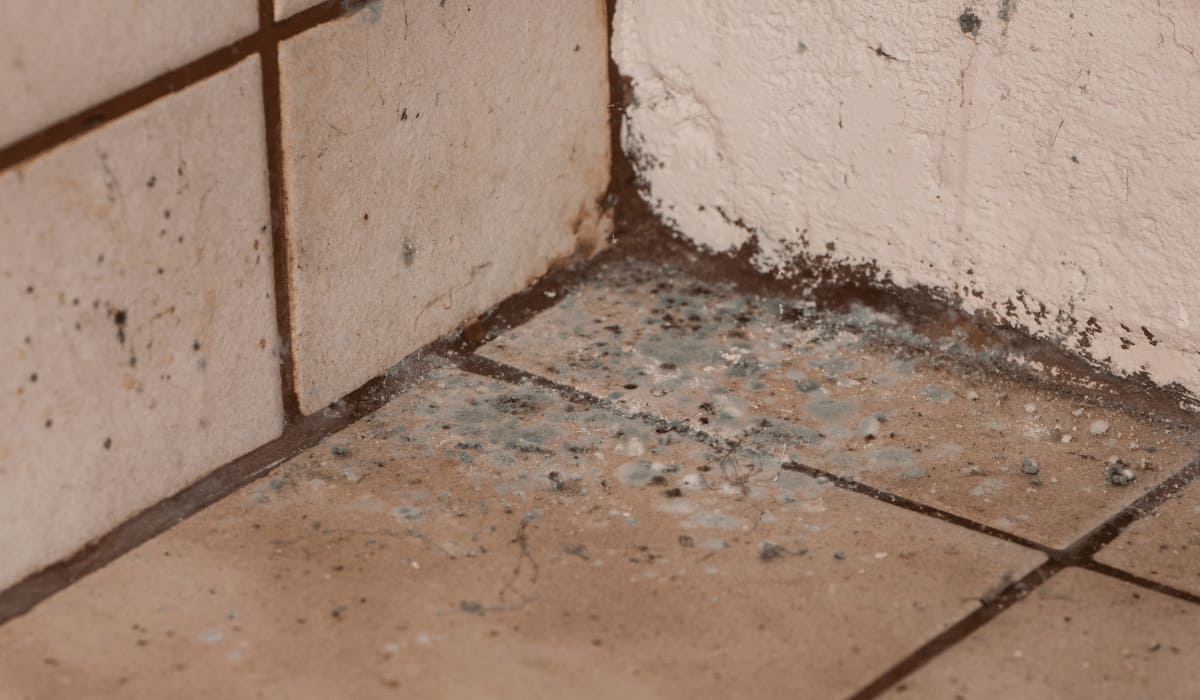
Mildew is a kind of mold. Typically, these are black, gray, or yellow, making their affected area look speckled with dust. As time passes by, its color darkens.
Known for its foul and musty smell, its odor is commonly described as the scent of damp fabrics, unpleasant due to its volatile organic compounds that can be seen over time. Mildew is also an umbrella term used for mold growth.
What Is The Difference Between Mold and Mildew?
Its first distinction is color. Molds are commonly blue, brown, gray, white, yellow, or green, while mildew is white, yellow, or gray, then turns brown as it ages.
If a mold looks fuzzy or slimy, mildew looks fluffy or powdery. The former can damage its entire area, while the latter only affects the surface. One reliable method to know whether mold or mildew is to spray bleach on the affected area.
If half an hour later, the spots turn white, then it is mildew. If it gets a different color, it is a mold. This can be traced to the insulation and condensation process, which affects mold growth.
Do Air Purifiers Help With Mold?
Air purifiers can trap mold spores to clean the air in our homes. However, once there is a visible mold problem, it takes more than just an air purifier to eliminate them.
It can only work on airborne spores and, in this way, filters the air to stop the moisture and contaminants of the molds from spreading.
Though proven effective against mold spores, how it is responsible for removal depends on the type of product used.
What’s The Best Air Purifier For Mold?
Air Purifier uses filters and other components to make everything we breathe clean enough for the body. There are factors to consider in eliminating molds, such as HEPA filters and UV light.
Air Doctor 5000 Air Purifier
| Available | On | Amazon | ||
|---|---|---|---|---|
| Buy Now |  | AIRDOCTOR | PrimeEligible | |
| Buy Now |  | AIRDOCTOR | PrimeEligible | |
| Buy Now |  | AIRDOCTOR | PrimeEligible | |
| Buy Now |  | AIRDOCTOR | PrimeEligible |
With its sleek and minimalist design that can fit any house style, this air purifier can capture 100% of airborne particles at 0.003 microns in size, capable of filtering mold spores at 10 microns.
Proven effective in laboratories for removing mold spores, it is ideal for making our homes safe. For convenience, it can be moved around the house due to its handle and wheels, and it is also suitable for larger rooms up to 2002 square feet and even high ceilings because of its six fan speeds.
Its medical-grade H13 UltraHEPA-based filtration system can remove even the COVID-19 virus to make the air we breathe as clean as possible. Its Whisperjet fans allow maximized capacity at a very quiet system.
However, the machine itself is pricey, and the replacement filters. It also needs regular maintenance to ensure quality.
Read the full AirDoctor 5000 air purifier review.
Pros
- Modern design
- Large coverage area
- 6 Fan Speeds
- Energy Efficient
Cons
- It has many filters that should be replaced regularly = costly
Alen BreatheSmart 75i Air Purifier
| Available | On | Amazon | ||
|---|---|---|---|---|
| Buy Now |  | Alen | PrimeEligible | |
| Buy Now |  | Alen | Prime | |
| Buy Now |  | Alen | PrimeEligible | |
| Buy Now |  | Alen | PrimeEligible |
Alen’s medical-grade True HEPA-fresh filter removes 99.9% of bacteria, airborne viruses, and particles that should be more significant than 0.1 microns.
Aside from its capability of eliminating molds, it can also eliminate its odor because of the Heavy Odor Filter installed in this machine.
Allergens are easily trapped throughout the filtration process, as they can clean a room of 1300 square feet. Its LED sensor will also guarantee us that it is working.
Running daily and every hour can last up to 12 to 15 months. It is also energy-efficient, quiet, and equipped with low maintenance costs, and its only downside is the higher initial cost needed to be paid for 75i.
Read full Alen Breathesmart 75i air purifier review.
Pros
- A lot of great features
- Sleek design
- Energy Efficient
- Low maintenance costs
Cons
- High price
People Also Ask
What’s Better for a Mold – Air Purifier or Dehumidifier?
Dehumidifiers can remove humidity, which is the source of molds. Air purifiers specialize in making the air clean for us to breathe.
Though these two products can go well hand-in-hand to assure stopping the mold permanently from growing, if needed to choose, dehumidifiers are better since they can make the molds dormant.
Are HEPA Filters Effective Against Mold?
HEPA filters are proven effective against airborne spores, including molds. It can eliminate nearly 98% of particles and be classified as safe since it can decrease the chance of getting health problems due to inhalation of mold spores.
Conclusion
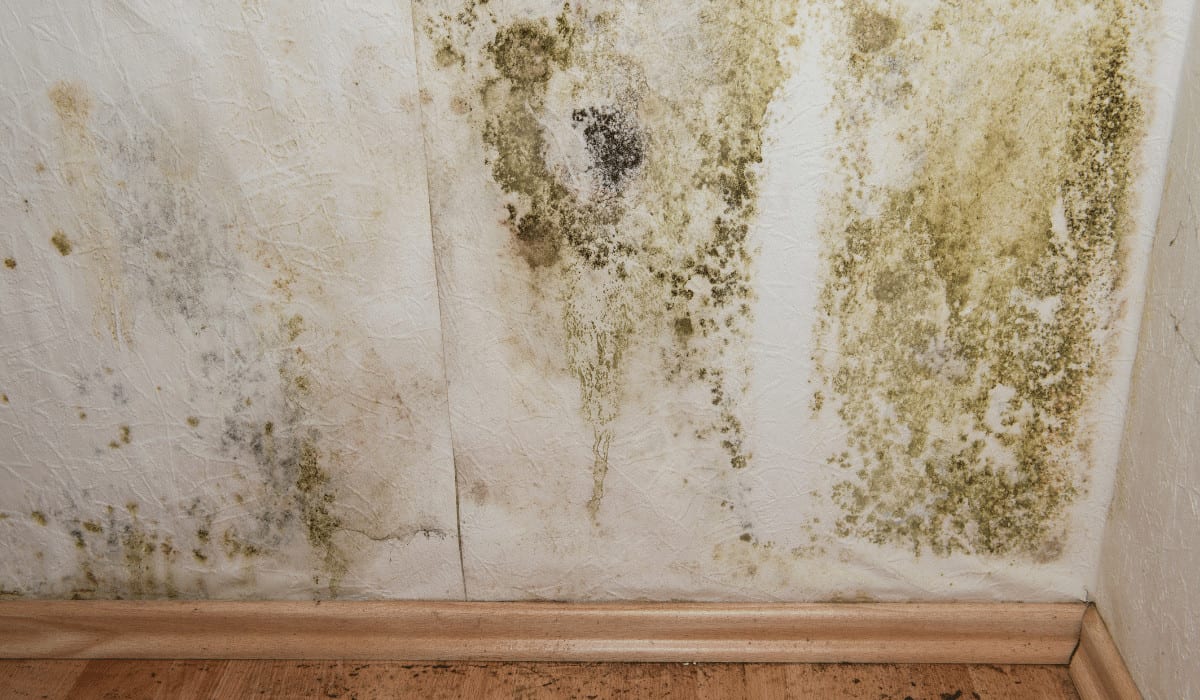
Molds are just there, and we cannot do much about it. Useful for the environment as it may be, it can still wreak havoc in our personal lives, especially on our safety.
As technology gets increasingly advanced, air purifiers are there to solve a common indoor problem: mold growth.
Though air purifiers cannot directly kill the molds from their area, at least they can clean the air for us to breathe without worrying if it might pose some risks to our health.
Filtering air can be the least we can do, and this device, without a doubt, can help us assure safety amidst the fungi growth that can be beyond our control.

